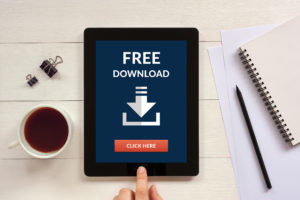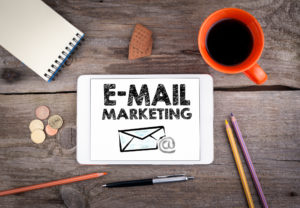Long-Term Relationships Lead to Long-Term Clients…
And Our Online Content Services Can Help You Build Those Relationships
OK, so your ideal client has found your website, and he’s been impressed by the copy he finds there. It seems like you’re speaking directly to him, like you know the challenges he faces, like you could very well be the solution to all his problems….

But for some reason, he’s just not quite ready to pull the trigger and hire you. Maybe the funds to hire you aren’t available for a few months yet. Maybe he’s thinking about a major new professional development project he wants to launch, but he wants to wait to start this new project over the summer or at the beginning of the next school year.
So, what can you do to keep him interested? What can you do to stay “top of mind” so that, when the time is right for that new professional development project, he comes back to hire you?
I’ve Got Good News and Bad News….
The good news is that, in today’s connected world, there are many ways to build an ongoing relationship with potential clients like this one. I’ve detailed some of the most popular and effective ones below.

The bad news? It takes a lot of work to build and sustain such relationships. And not only that, many of these relationship-building methods require specialized knowledge or writing skills that you may not have (or, even if you do have the skills, you may feel that your time would be better spent on other things).
But hey, I’ve got more good news for you! I can do all of this work for you. Or maybe you’re comfortable doing some of this work yourself (staying in touch with your list with regular e-mails, for example), but you need someone to write a special lead-generation report and write a series of specialized autoresponder e-mails for you.
Or maybe you’re OK with doing everything else, but you just can’t stand the thought of writing a regular e-newsletter, even though you really want to have one. I could write your newsletters, freeing you up to spend your time on the relationship-building tasks you enjoy more.
It’s totally your choice which relationship-building tasks you want to tackle and which ones you want to “farm out.” What’s really not a choice in today’s super-competitive education market is the choice to do no relationship-building at all. That’s the path to quick business failure.
So, as you plan your strategy for building relationships with your ideal clients, take a look at the list of options below. Which ones are you excited about doing yourself? Which ones might you want help with?
And when you’re ready to talk about how I can help, just Contact me and we’ll devise a strategy for long-term relationship building.
Online Copywriting Services
E-Newsletters
Think of an e-newsletter as a more consistent, more robust version of blogging, but sent only to your “in-house list.” You can offer website visitors something free (see Lead Generation Special Reports, below) in exchange for their names and e-mail addresses. Once you have their contact information, you can send your e-newsletter to them. You can offer teaching tips in your area of expertise. You can offer classroom management strategies. Whatever you have to offer that can be of value to your prospect. And every time they read your newsletter, you’re strengthening your relationship with them. E-newsletters are typically sent out once or twice a month.
Lead Generation Special Reports

You can’t communicate regularly with your prospective clients if you don’t have their contact information. And most people are reluctant to give out their contact information for nothing. So, the savvy marketer offers these prospects something for free in exchange for their contact information. But, for this approach to be effective, the report (often called a “lead magnet” or “white paper” in other business fields) has to be something of value. If you give your prospects something that’s free, that’s substantial, and that helps them solve a problem, they’ll be very appreciative. And then you’ll have their contact information to enter into your e-mail content management system so you can send them your newsletters, e-mails, and product offers.
Squeeze Pages
A squeeze page is a web page that usually offers something for free (like a special report) in exchange for the visitor’s name and e-mail address. Squeeze pages allow a little more room for “selling” the visitor on opting in than a basic sign-up form does. Plus, you can drive traffic to your squeeze page in a variety of ways—direct mail ads, banner ads, pay per click (PPC) ads, or e-mail.
Autoresponder E-mail Series
An autoresponder series is simply a series of e-mails that’s automatically delivered to new contacts or people already on your e-mail list on a fixed schedule you set up in advance. An autoresponder series, done right, allows you to achieve a couple of important marketing goals: for new prospects, it allows you to quickly build a solid relationship by delivering more valuable content to them over a period of a couple of weeks after they sign up. And when you have a new product to launch, you can use an autoresponder series to build excitement for the new product, eventually leading to a sale. Autoresponder series are known in marketing circles to be one of the most effective means for driving sales. If you’re not using them, you’re missing out!

Relationship-Building (Non-Sales) E-mails
E-mail is still one of the most powerful marketing tools ever invented. Of course, you have to have a list of people to send your e-mails to, and you need to stay in touch with your list regularly in order to build a solid relationship so that, when you do have something new to sell or a new service to offer, the people on your list will open those e-mails. But you can’t just send sales e-mails all the time. In fact, you should probably send at least two or three non-sales e-mails for every one sales e-mail you send. Otherwise, the people on your list will begin to feel like you’re only after their money, and they’ll unsubscribe. There’s an art to sending these non-sales e-mails—keeping them short and friendly, while still offering some “nugget” of helpful content in each one, for example. So, if you’re going to use e-mail to boost sales, you need to balance that approach with non-sales e-mails.
Promotional (Short-Copy) E-mails
These short e-mails are sent out periodically, in between your non-sales emails, and are designed to drive traffic to a squeeze page selling or giving away a product of some sort. These e-mails tend to be ½ to four pages long.
Sales (Long-Copy) E-mails
These longer e-mails are designed to directly sell a product or service. They are basically sales letters (see below), but instead of being housed on your website, they are delivered to your list via e-mail. Since these e-mails are designed to sell a product or service all in one step, they have to be longer to take the prospect all the way through the sales process. They are typically anywhere from two to twelve pages long.
Sales Letters
Sales letters have the same objective as sales e-mails, but they are tightly-structured web pages housed on your site. Since they’re web pages, you can use more html bells and whistles to make the sales message look better. Leads show up on your sales pages through a variety of sources: direct mail ads, e-mails, banner ads, or PPC ads.
Which Relationship-Building Strategies are Right for You?
As you can see, there are many ways to build solid, long-term relationships with your prospects, and many ways to monetize those relationships over the short or long term. As I said earlier, you can do any or all of these yourself, or you can do some of them and have someone else do others for you.
If you’re ready to discuss your options and see how I can help you with your relationship-building efforts, Contact me right away and let’s get started.
I look forward to hearing from you!

